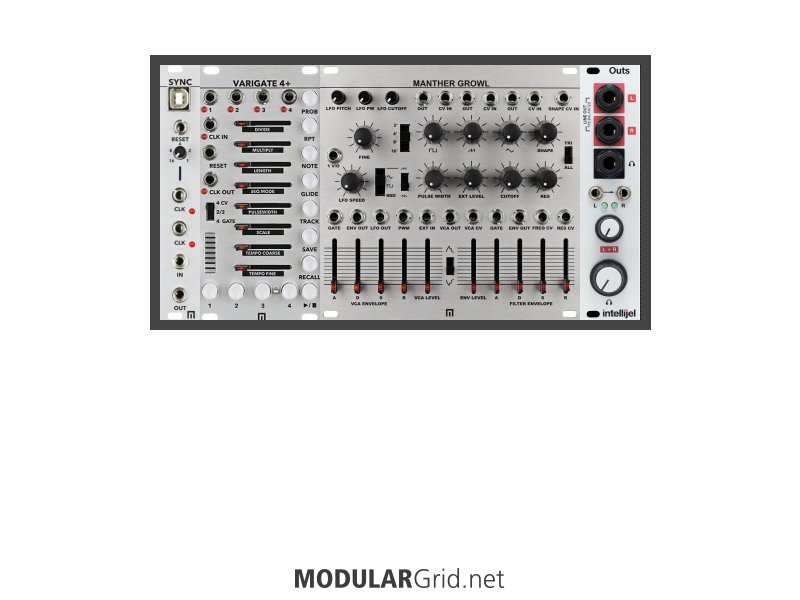Hi Jrs77,
The ACL - Sinfonion might be just right then, ridiculous expensive but ideal for us lazy people who don't want to put any notes into any devices. With the Sinfinion you just provide a clock and some input, let's say a slow LFO and there you go. You have three "normal" channels/voices for notes, then one specific "chord" channel (3 or 4 note-chords), for that you can use the chord "sequencer" but even if you don't use that "sequencer" (officially it's called chord progression sequencer) it still runs fantastic and putting some input in that sequencer is easier than eating an apple. It's not in a way that you have to put single notes for that chord sequencer, just a few settings, removing / adding only a few notes in a few chord steps and there you go.
The part I like most of the Sinfonion is the Arpeggio, just plug the clock into it, use the 1 V/oct output to connect it to one of your nicest oscillator sounds you got and the Sinfonion is doing the rest for you, playing chords, melodies (well kind of, created either by those 3 voice-channels and/or by the arpeggio), whatever you want. If you get a little bit less lazy than 100% (so let's say being lazy at 95%) then with once and a while pressing a button you change the sound, note, chord, arpeggio, transposition and all the other things I most likely forgot.
You can let sound it all nicely in-tune or if you want to let it sound not too perfect you use the detune option and there goes your nice sounding sounds to smithereens ;-)
The Sinfonion is quite complicated but the manual is written pretty good with quite some humour, so it's easy to read through, follow the simple steps mentioned there and you got most likely what you want (and way beyond that).
The user interface is very friendly and once you have gone once through the manual, you need that manual only for a few special settings but most of the time it's easy, not much to remember, no serious menu diving, most is just one-level, with a few exceptions I think (like factory reset or something like that, but the often used options is just pressing one button and then you can select what you want).
You have assignable "things" like: 4 CVs that you can assign, 2 inputs, 2 outputs and... nice one: two pot-meters that you can assign to parameters you like to change with them.
Oh yes, make sure you got enough voices that you can "feed" the Sinfonion with, that's perhaps the only con (beside the price) of this fantastic thing: The Sinfonion is like a black hole, it absorbs (and requires) all your modules you have in your rack; it's for medium till large environments. So if you just have two oscillators you might just not have enough "food" for the Sinfonion to feed it and keep it happy ;-) You need 8 voices: 3 for those normal channels, then 4 (so a quad VCO is perfect for the job; I am using here the Doepfer A-111-4 for the chords, these two go quite well together) for the chord channel and a voice for the arpeggio. I guess you can start with 6 voices and in the future grow to 8 voices, starting with using just one normal channel first; but 6 voices is the minimum I would advice to go for. If you don't have a quad VCO yet, you could even start with 5 voices, 3 voices for the chords then, 1 for the arpeggio and 1 (to start with) for one of those three normal channels.
Good luck and kind regards, Garfield Modular.


